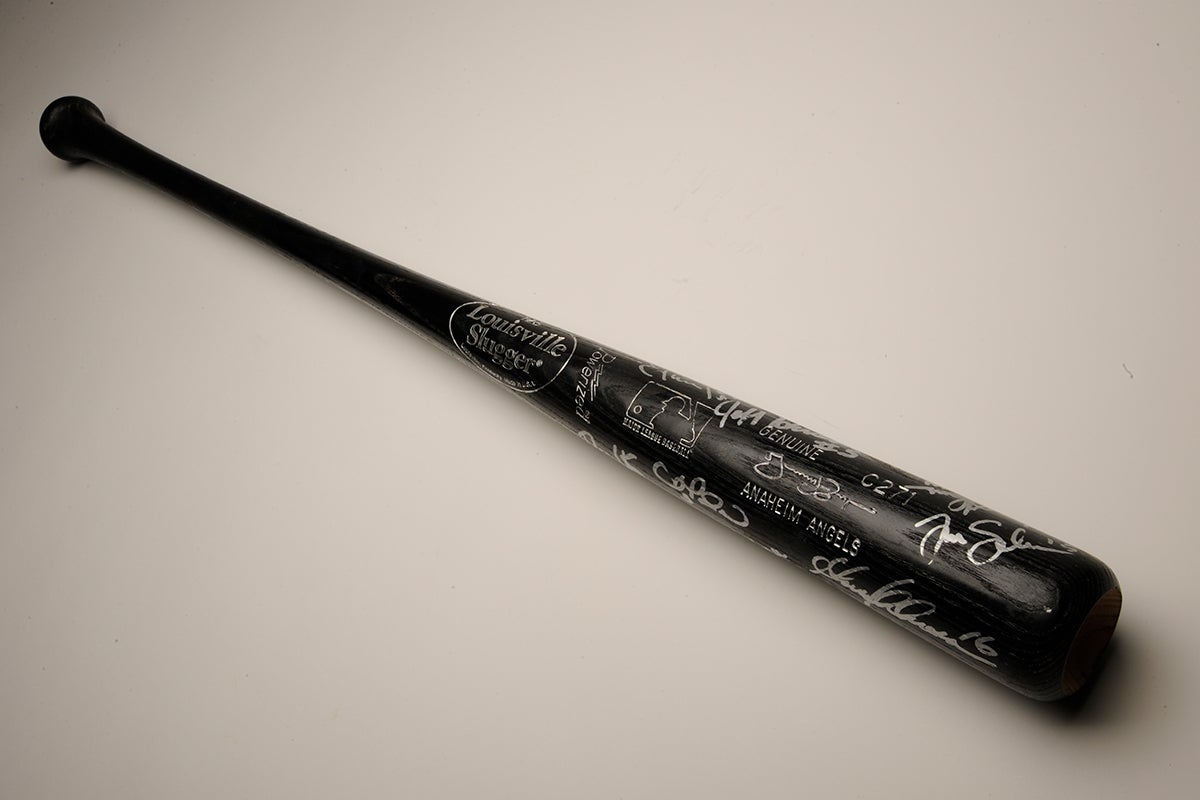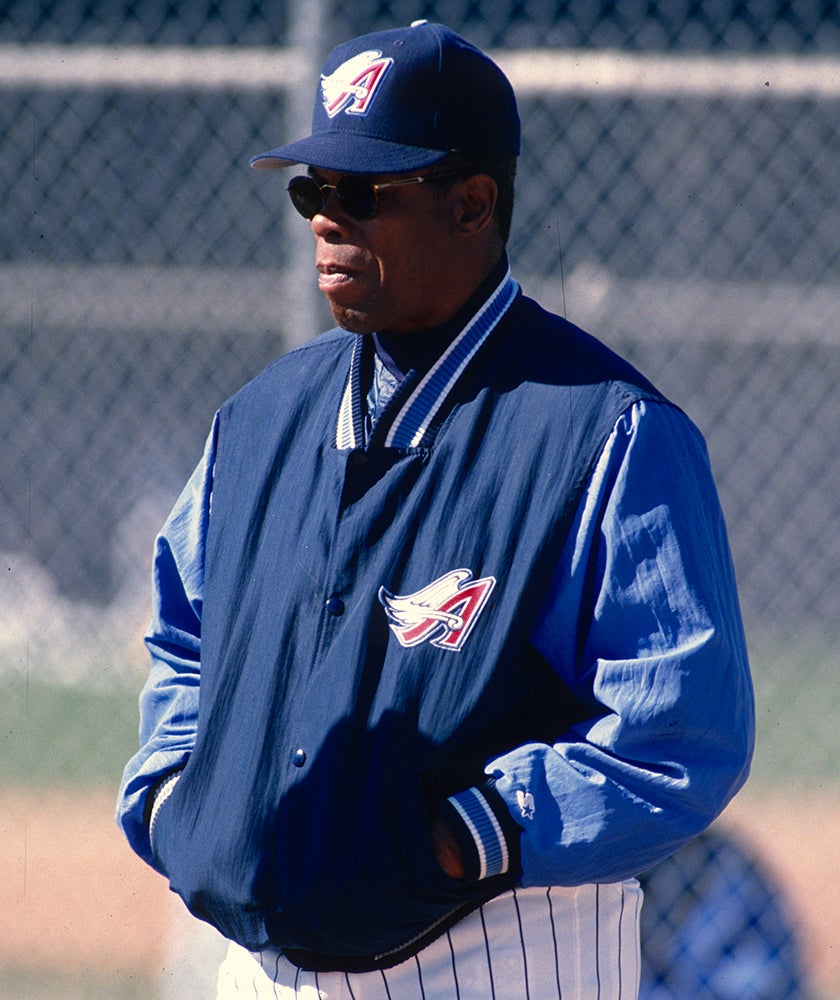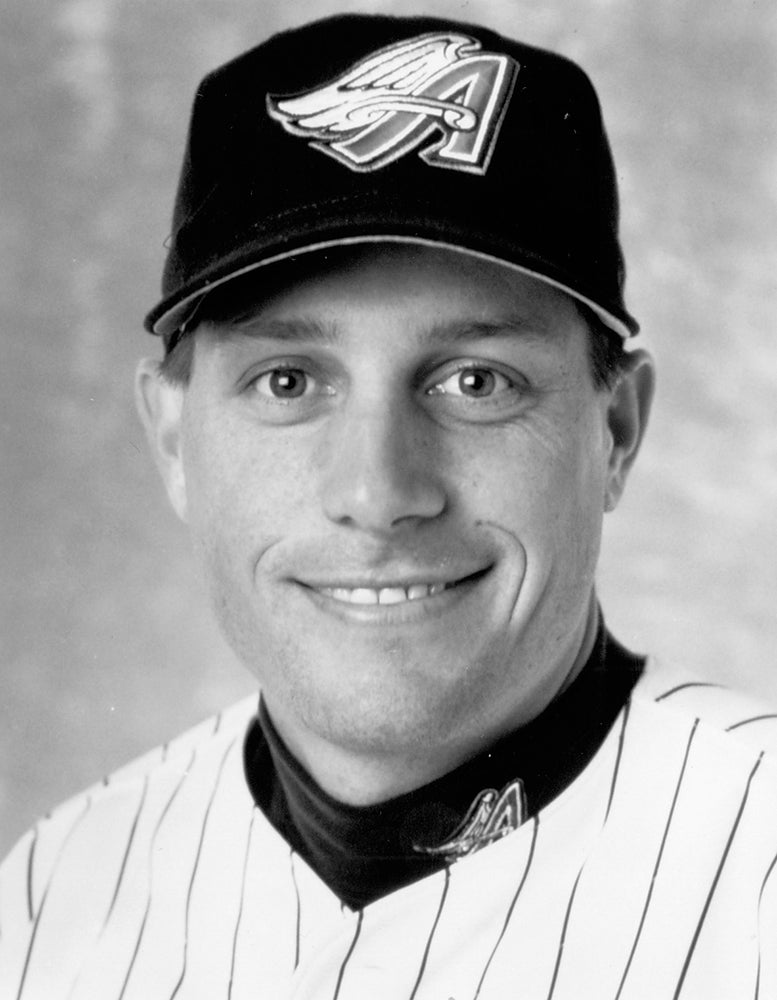- Home
- Our Stories
- #Shortstops: A Bat for Everyone
#Shortstops: A Bat for Everyone
When a Major League hitter finds himself in a slump, sometimes he will do just about anything to work his way out of it.
But what do you do when the whole team is mired in a seemingly endless dearth of quality at-bats?
On Aug. 4, 1999, the Anaheim Angels was a team in just such a predicament. They were sitting on a 44-61 record, had been shut out twice in their last four games and had lost 16 of their last 18. They were desperately trying to avoid being swept at home by the Kansas City Royals. The team was looking for some sort of solution, anything to get back to hitting the baseball.
At a team gathering the night before, the hitters were gathered around the Angels’ hitting coach – Hall of Famer Rod Carew – when the coach suggested something a little off the wall. Carew, no stranger to figuring out ways to get hits and working out of slumps, remembers, “We were struggling and I thought, ‘Let’s do something different.’ And it turned out to be a big deal.”

“Rod was our hitting coach and he said, ‘Hey, why don’t you guys use one bat? Go through the lineup and use one bat and maybe snap the slump,’” former Angels shortstop Gary Disarcina said as he recalled that moment in an interview with the Hall of Fame in Arizona on Feb. 29, 2016. “We started thinking about it and we all said we’re going to do it.” He remembered that the hitters were trying to figure out which bat to use.
Carew said, “It was random. I just pulled it out of the bat rack and said, ‘OK guys, we are going to use this bat through the lineup.’ All of the guys were satisfied with the way it felt.” The bat, Jim Edmonds’ Louisville Slugger 34-32 C271 model, became the bat on which the team rested its hope for a cure to their hitting ills.

“That day, Orlando Palmeiro led off and I was batting second. I went up to the on-deck circle and I’m using a regular weighted bat,” recalls Disarcina. “Palmiero had a 3-2 count, took strike 3, dropped the bat on home plate and walked across the plate to go back toward the dugout in Anaheim. (Home plate umpire) Tim Tschida threw him out of the game. I was walking up, I didn’t have a bat and Orlando was walking by me and he turned and starts talking to Tim saying, ‘What are you talking about? Why’d you throw me out?’”
Disarcina tried to explain to the umpire that the whole lineup was going to use this one bat and that Palmiero was not trying to show up the umpire, he was just leaving the bat there for the next batter to use.
Disarcina recalls, “Tim looked baffled and confused and I said it again, ‘We’re all using the same bat!’ And then he said, ‘Well, I’m going to have to do something that I’ve never done before and throw a player back into the game because there’s no reason to throw him out!’ (Royals catcher) Chad Kreuter was cracking up and I started laughing. It was a great moment!”
Maybe it was that moment of levity that broke the slump, or maybe there was some magic in Edmonds’ bat.
“They ended up having fun with it,” Carew said. “Some of them used the same bat twice in the game. They started swinging good and they were happy. Someone said, ‘That one’s for the coach!’ I thought, ‘I’ll take anything that gets us hits.’”
Disarcina walked in that first at-bat and moved to second on a single by Garret Anderson. In the bottom of the second, Darin Erstad singled, Jeff Huson singled and they both came around to score; Erstad on a double by Angels catcher Bengie Molina and Huson on a sacrifice fly by Palmeiro. Molina rang up another RBI in the fourth when he singled with two men on and Troy Glaus came around to score. Later in that same half-inning he was brought home on an Anderson single to center field.

The Angels won that game 4-3, getting 10 hits, with Molina and Huson each garnering three in the game. They would go on to win the next night as well, blanking the visiting Boston Red Sox 8-0 and racking up 14 hits in that contest.
And the bat that helped them out of their slump ended up in Cooperstown.
“I remember that the Hall of Fame called the next day asking for the bat because it had never been done before in Major League Baseball,” Disarcina said. “The decision was should Bengie (Molina) keep the bat for personal reasons or should he have us all sign it and send it to the Hall of Fame. Bengie ended up signing it and letting the Hall of Fame have it.”
“It was a fun thing. They had fun. It turned out to be a big deal,” said Carew about this unique way of breaking out of a team-wide slump.
Disarcina credits Carew with the memorable plan that broke up the slump.
“That was a special night, that was a lot of fun,” Disarcina said. “That was one of those things that you look back in Major League Baseball and Rod was the instigator. He was the thinker of the idea. I have a picture of the bat and I read the names on it and it puts a smile on my face because it was a special night.”
Roger Lansing is the manager of recorded media at the National Baseball Hall of Fame and Museum

